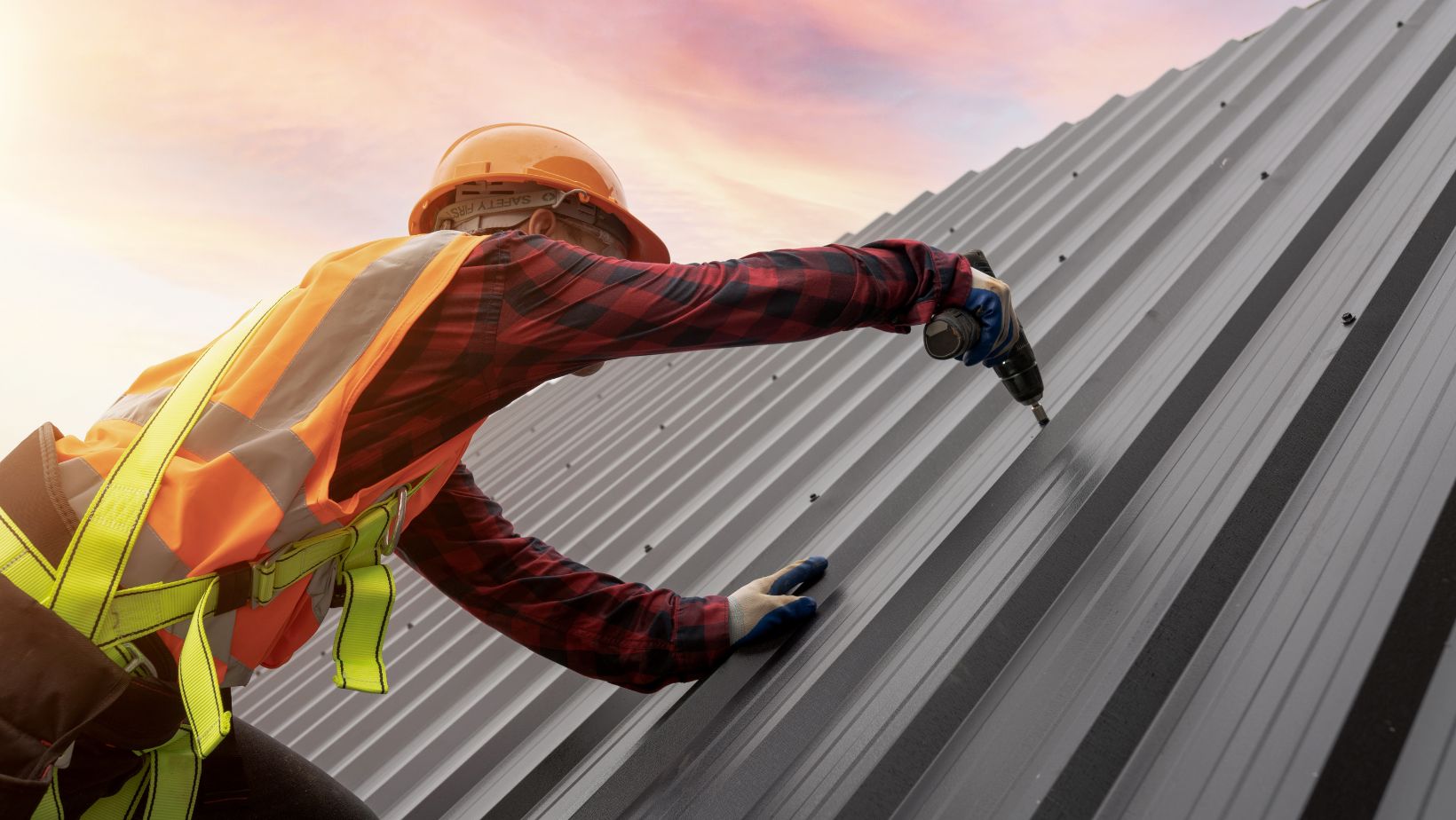
Metal roofs are recognized for their durability, energy efficiency, and aesthetic appeal. However, like all roofing materials, they are subject to the effects of weather over time. Understanding how different weather elements impact the longevity of metal roofs is crucial for ensuring their long-term performance and reliability. This article explores how various weather conditions affect metal roofs and provides strategies to maximize their lifespan, ensuring that investments in metal roofing remain protected for years to come.
The Composition of Metal Roofs
With proper care, metal roofs can last between 40 and 70 years. However, exposure to Vancouver’s diverse weather conditions can still influence their overall performance and appearance, making timely metal roof repair crucial to maintaining their durability and aesthetic appeal. Metal roofs are renowned for their durability and efficiency in various climates. However, different weather conditions can significantly affect their longevity.
Metal roofs are constructed using a variety of materials, each with unique properties that influence their resistance to weather elements. The most common materials include:
- Steel: Often coated with zinc (galvanized) or a mixture of aluminum and zinc (Galvalume) to prevent rust and corrosion. These protective layers can be further enhanced with paint systems for additional durability and aesthetic appeal.
- Aluminum: Naturally resistant to corrosion, making it an excellent choice for coastal areas. It’s lightweight and can be coated for increased durability and color options.
- Copper: Known for its distinctive appearance, copper develops a green patina over time that acts as a protective layer. This material is highly durable but more expensive than other options.
- Zinc: Offers natural corrosion resistance and develops a protective patina similar to copper. It’s a popular choice in Europe for its longevity and low maintenance requirements.
- Tin: Less common today, tin roofs were popular in the past and are still used in some historical restorations.
The thickness of the metal, measured in gauge numbers (lower numbers indicate thicker metal), also plays a crucial role in durability. Thicker metals generally offer better resistance to impacts and extreme weather conditions.
Sunlight and Heat Effects
In regions with significant sun exposure, ultraviolet (UV) rays can lead to surface degradation of metal roofs, resulting in noticeable color changes and chalking, particularly on painted or coated finishes. Over time, this degradation can diminish the roof’s visual appeal and protective qualities.

During warmer periods, thermal expansion may occur, potentially causing slight warping or loosening of fasteners if the roof is not installed with appropriate allowances for movement. It is essential to ensure that the installation process accounts for these factors to maintain the integrity of the roof. Regular inspections can help identify any early signs of damage caused by sunlight and heat, allowing for prompt repairs to prevent further deterioration.
Rain and Moisture Challenges
Areas with high rainfall and humidity levels subject metal roofs to constant moisture exposure. While metal surfaces are designed to efficiently shed water, prolonged moisture contact can lead to corrosion, especially in steel roofs that have compromised protective coatings. This corrosion can significantly reduce the lifespan of the roof if not addressed promptly. Proper ventilation and insulation are crucial to prevent condensation and potential mold growth on the roof’s underside, which can lead to further complications. Homeowners should consider installing adequate ventilation systems to promote airflow and reduce moisture build-up, ensuring that the roof remains in optimal condition.
Snow and Ice Considerations
In colder climates, snowfall creates unique challenges for metal roofs. Although snow tends to slide off metal surfaces more easily than other materials, heavy accumulation can still occur, adding considerable weight to the roof structure. This added weight can strain the roof and potentially lead to structural issues if not managed properly. Ice dams form when snow melts and refreezes at the roof’s edges, potentially trapping water beneath panels and causing leaks.
To mitigate these risks, some metal roofs incorporate design features like snow guards, which help manage snow and ice buildup effectively. Homeowners should also be vigilant about clearing snow from their roofs after heavy snowfall to prevent excessive weight and potential damage.
Wind and Storm Impacts
Regions prone to high winds and storms can see significant effects on metal roofs over time. Proper installation with secure fasteners and interlocking panels is crucial for wind resistance. If the roof is not installed correctly, high winds can lift panels, leading to potential damage and costly repairs. Regular inspections are essential to ensure that fasteners and seams remain tight, preventing wind-related issues. In areas with frequent hailstorms, impact-resistant metal roofing options can help mitigate damage, providing an extra layer of protection against severe weather. Homeowners should consider investing in these options if they live in regions prone to such weather events.
Coastal Environment Effects
Coastal areas present additional challenges for metal roofs due to salty air and high humidity levels. These conditions can accelerate corrosion, particularly in steel roofs. Materials specifically designed to withstand harsh coastal conditions, such as aluminum or specially coated steel, are recommended for these regions.
Thermal Cycling Effects
Temperature fluctuations throughout the year lead to thermal cycling in metal roofs. This natural expansion and contraction can cause fatigue or loosening over time if not properly accounted for during installation.

Flexible clip systems that accommodate thermal movement are essential for maximizing roof longevity, especially in climates with extreme temperature variations.
Importance of Proper Installation and Maintenance
The durability of metal roofs in any climate heavily depends on the correct installation and regular upkeep. Key installation factors include appropriate underlayment, adequate flashing, and proper fastening systems. Routine maintenance tasks involve inspecting for loose fasteners, removing debris, and addressing any signs of corrosion or damage promptly.
Conclusion
Various weather conditions present specific challenges for metal roofs. Strategic material selection, proper installation techniques, and consistent maintenance enable these roofing systems to effectively withstand different weather patterns and provide reliable protection for decades. Understanding the interaction between weather elements and metal roofs allows property owners to make informed decisions and maximize their roofing investment.












